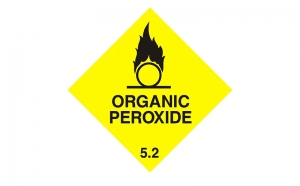Email: info1@peroxide.cn
Аddress: 3808 Zhencheng Road , Jiangyin city, Jiangsu Province, China
Zip code: 214400
2023-11-02 7:15:37 greenrox
Liquid or solid organic matter containing a divalent OO-structure and a derivative which can be regarded as hydrogen peroxide in which one or two hydrogen atoms have been replaced by organic groups. The term also includes organic peroxide formulations (mixtures). Organic peroxides are substances or mixtures that can undergo exothermic self-accelerating decomposition and are thermally unstable. Additionally, they can have one or more of the following properties:。
a) Easy to explode and decompose;
b) Rapid burning;
c) Sensitive to impact or friction;
d) Dangerous reactions with other substances
Note: In laboratory tests, organic peroxides are prone to explosion, rapid deflagration or violent effects when heated under closed conditions, and are considered to have explosive properties.
Reactive oxygen species

Refers to the expression of the oxidizing ability present in organic peroxides in the form of oxygen (when oxygen: 8.00)
Self-accelerating decomposition temperature (SADT)
The lowest temperature at which peroxide begins to accelerate decomposition in sturdy packaging suitable for storage and transportation.
Half life
The time required for 50% decomposition of organic peroxides under specific temperature conditions.
Alarm temperature(Tem)
The temperature at which first aid measures must be taken (e.g. removal of organic peroxides). Obtained from self-accelerating decomposition temperature.
Control temperature (Te)
The maximum temperature at which the product can be safely stored. Calculated from the self-accelerating decomposition temperature